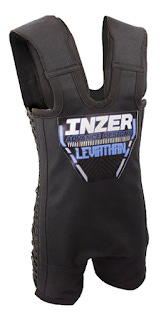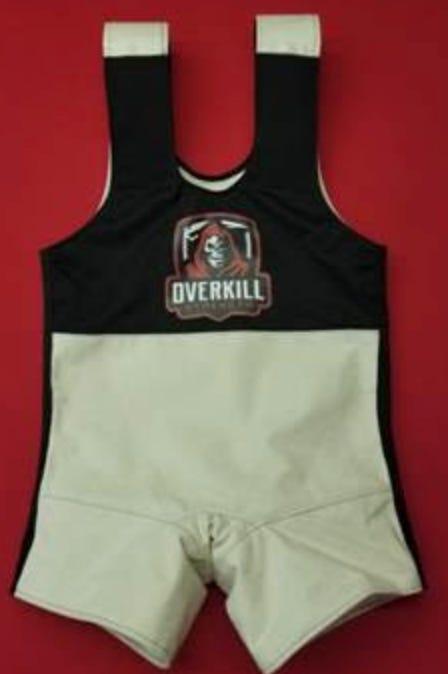The Basics of Multi-Ply: Squat Equipment
I wanted to write this series to get a few basic pieces of information out that I wish were more readily available online when I was first curious about gear. While common sense to competitors, I was unsure of some things coming up and hope this article finds someone early enough in their journey to make use of it.
Before you go out and buy a full set of new gear from whoever, try to find used stuff first. That might sound gross to you but I promise it's not (maybe it is- but get used to it). Whether it is from a gear bin at your gym or on Facebook Marketplace (the best groups are Powerlifting Gear Classifieds, Multi-Ply Powerlifting, and Powerlifting Gear Buy Sell Trade). Not only is this cheaper in case you try it and hate it, but also nobody tells you that broken in gear is 1000x better than new. New gear is even more difficult to use. Trust me, all of my first gear was new from Inzer. Not only did this take forever, but none of it really fit and I not only had to learn it all from scratch, but also had to break it in.
Briefs
In multi-ply (and single-ply in some feds) you wear what is called "briefs." These are basically a squat suit with no straps. Far and away the most popular briefs both among beginners and elites are Inzer Predators aka "Preds."
Are these the best briefs ever? Not in my opinion. Compared to newer offerings from Titan and Overkill, I think they are a bit outdated. They are hard to get a good fit with (as is with all Inzer gear) and stretch out relatively fast. However, you cannot argue with their results. Many world records have been squatted in these.
Despite their flaws I would recommend them to beginners wholeheartedly for two main reasons. First, they are easy to use. Stock these come with two plies and no grid stitch made of Inzer's PGX Poly (polyester). This will do a lot, I got over 100lbs out of them the first time I used them (they were my first pair of briefs). As for material color, it isn't as important as with Inzer's bench shirts, but try to get black if it is available. Red and blue have been known to be stretchier from what I have heard. While not by a large margin it is something I wanted to make note of.
Also, by the time you wear them out and need new briefs or are ready for something more aggressive, worn out preds make for a great pair of training briefs. Don't sell them like I did.
We say "training briefs" to refer to weaker briefs which give you less carryover (pounds you get out of gear above your raw numbers). This is useful because briefs provide compression and support to your hips, a very vulnerable joint. Having loose and worn out training briefs for lighter squats and sumo pulls lets you keep that compression and support while being able to more efficiently build raw strength given the lower carryover.
And yes, you wear these UNDER your squat suit at the meet. I did not understand this at first, as my only experience with gear was a USAPL single-ply lifter at my gym. While he had briefs, they were a training tool that he wore because he didn't want to wear his suit out. It didn't seem right to me that not only did you get a 2+ layer squat suit in multi-ply, but you basically got to wear another 2+ layer squat suit under it! I assure you this is correct and within the rules.
As for preds, something else I didn't know was about grid stitching. Grid stitching is basically a cross hatched pattern of seams on certain panels of gear, which add stopping power at the cost of the equipment's longevity (according to some). I thought this came standard. If you want more plies or grid stitching, you have to call Inzer's hotline and ask. Even then they might still fuck it up if you speak too fast. Make them repeat your order back to you. While you still might get the wrong pair of briefs delivered, at least then they will be more keen to helping you if it goes awry.
Preds have long legs, Titan's boss/super boss multi-ply briefs have very short legs. You will have to find which works better for you. Overkills are all custom and you can get them made however you want, but as a beginner you do not need custom gear yet (more less from Rudy, he makes it very tight). Also, briefs are almost always poly. Some old timers will tell you of denim or canvas briefs from back in the day, but nowadays it's all poly. Titan also has a very popular grid stitch, most of their briefs will have it all over. Overkill will actually not grid stitch any of their gear at all from the factory.
The vast majority of your training will be done in briefs. They protect your hips and get you in the geared groove. They are good for your longevity and keep you conditioned to bigger weights. They also create less pressure than a suit with the straps up and thus it's a bit easier to recover from.
You can also deadlift in them. Mostly sumo again for the hip compression. I personally do not like pulling in briefs and opt for a thin old Frantz canvas squat suit with no briefs under. You will have to try different combinations of briefs and suits and find which you like most- but more on this later.
Squat Suits
The squat suit goes over your briefs, and is basically a singlet made out of poly or canvas.
As opposed to briefs, these are more often made of canvas. Poly gives you rebound, canvas gives you stopping power. This won't mean much to you now, but it will make more sense when you try it and feel it later on. These are also multiple layers. As a beginner, the most popular suit is definitely Inzer's Leviathan Ultra Pro, or as most call it the "LUP" or "Lace Up." These are popular because they are easy to get on and off, and easy to adjust. With a solid canvas, a weight fluctuation of even as little as 5 lbs can totally change how a suit feels. Below is a picture of the LUP.

I agree, the laces can be a royal pain the ass. If you would rather hang yourself by your suit straps, you can go with a non-lace up canvas. The most popular options are the Overkill canvas and Inzer OG Leviathan. These are also sometimes known as "diaper suits" because they are white canvas. Both are shown below.


Overkill uses a thinner canvas similar to an old Frantz (Rudy Rosales actually was one of Ernie Frantz's seamsters way back, hence the similarities in cut and material). Inzer uses the thickest grade of canvas known as "duct canvas." The black portion on the top half of the front of the Overkill (from here on out "OK") is actually poly. This is because poly stretches and it makes it easier to take in air. OK also makes a 50/50 suit that is an all poly front and canvas back for this very reason- shown below. I seldom see these in use but they are out there.

Poly does indeed stretch. I know it doesn't feel like it when you hold it but it does. Canvas, no matter how old might I add, does not stretch. This is where the stopping power comes from.
If you don't like canvas for whatever reason, poly suits also exist. While more popular in single ply, there are some great multi-ply poly suits out there. Inzer's aren't really worth it long term. They can be good for beginners but you don't see any all-time world records in them for a reason. The biggest poly squat suits are the Titan boss/super boss (2 ply and 4 ply, respectively) and the OK ultimate poly. Both shown below.


I have heard great things about both of these.
You will also notice with all of these that they have velcro straps. I can't think of any modern multi-ply suits with solid straps. The straps are important. The tighter they are, the more pressure and carryover you get from the squat suits. This also makes it harder. As a beginner, start with straps down and then loose straps up. As you get more confident make them tighter. A good way to keep the straps loose is, when setting them, put your hand on your shoulder/trap underneath the strap. If that is too tight. stand your hand upright on your pinkie or index finger so there is four finger widths of space between your shoulder and the suit. Straps up sucks, I know, but learn it. Take your time.
As for which is better, poly or canvas, it is largely preference. Do you need more stopping power or more rebound? I can't answer that for you. There are also slight differences in technique you need in poly vs. canvas. Generally, you need to be more upright in a canvas. Poly generally also allows for more variety in stance width.
Knee Wraps
As opposed to raw and even single-ply, knee wraps are not used for rebound given the more vertical shin angle. They are used for stability. This means you might want to use different types of wraps and change your wrapping technique. Typically you will wrap less directly around the knee joint and more up the quad and down the shin. You will typically hear the term "casting" thrown around a lot, this just refers to keeping the joint stable (like a cast, hence the name). Some wraps cast better than others.
If you've never used wraps at all, start with something soft like Inzer Grippers. If you have used wraps, you already know they hurt, and probably already have some preferences.
This is easily the least complicated part of multi-ply because frankly they aren't that important. You need them, yes; but they aren't going to give you as much carryover as the rest of your equipment.
I personally like EliteFTS Super Heavies for multi-ply squatting. A lot of people like Inzer Grippers or Atomics (Atomics are stiffer grippers, they are actually Inzer Black Beauties with gripper rubber). OK wraps are also very popular. They are the closest thing you can find to the legendary Frantz TP-5000 Wrap. In short, learn to wrap in a way you like.
In regards to length, this is not an argument. 3 meters. The only fed that has a multi-ply division and doesn't allow 3m wraps is the USPA- and they don't have a monolift. You're not going to want to be walking out squats in multi-ply, that is a very bad idea.



